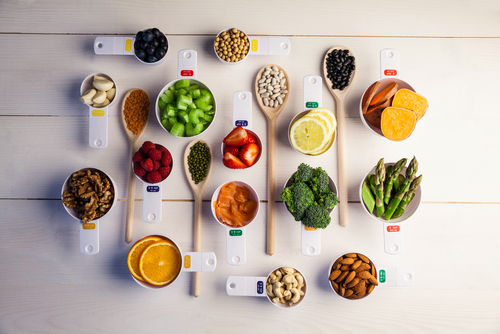By: Tayler Glenn
If you’re already following a TLS® Lifestyle, chances are you know that weight loss is not a “one size fits all” equation. While you, your likes, and your dislikes are the most important factor, there are a number of external influences that can derail your best efforts. Here’s a quick guide on how to tackle 5 common weight loss challenges so you can refocus on reaching that finish line!
You’re Entering a New Stage In Life
The Problem: Aging comes with wisdom…as well as quite a few additional changes (including new weight loss challenges)! Whether you’re entering middle age or your golden years, you may find that you don’t have the energy levels you once had or that clothes just don’t fit quite right despite your best efforts. While these signs are totally normal, they can definitely be discouraging! Some of the top reasons for weight gain as we age are a steady decline in physical activity, slowing metabolism, and loss of muscle mass. Even if these differences are slight, those calories no longer being used as fuel are stored as fat over time.
The Solution: Strength training is our top tip on tackling one of the most commonly reported weight loss challenges! Adding weights to your workout (or increasing the frequency/intensity of your existing lifts) is a great way to tap the brakes on muscle loss while building new muscle as well. Muscle cells are far more metabolically active than fat cells which means they burn more calories and boost your metabolism even while you aren’t active. Not only will you be burning more throughout the day, but you may also find yourself spending less time at the gym to get results!
When adding strength training to your workout, be sure to start slowly and with light weights. This helps make sure your body is able to handle the increased demands while ensuring proper form to avoid injury. You might choose to begin with body-weight exercises or enlisting the help of a trainer to get started.
You Aren’t Getting Enough (Real) Sleep
The Problem: Your alarm goes off at 5, but you’ve been staring at it since your to-do list woke you up at 4:30 a.m. Sound familiar? Skimping on sleep, or even getting inconsistent sleep, can really throw your body’s internal rhythms off which creates another one of those frustrating weight loss challenges. This can have negative impacts on your metabolism, impacting your hormones and making it harder for your body to tell you when you’re full or hungry! Why? Experts suspect that sleep deprivation may:
- Make you feel hungry, even when you’re not.
- Affect the secretion of cortisol, one of the hormones that can cause belly fat to accumulate
- Cause you to skip exercise or simply move around less during the day which lowers your total energy expenditure.
- Reduce willpower, making it harder to pass up temptation when it matters most
The Solution: Establishing a solid and reliable sleep routine can go a long way, but it may require you to change some of your habits! Try incorporating some of these suggestions into your nighttime routine and see if it helps calm your mind so you can ease into a restful night’s sleep:
- Get up and go to bed at the same time each day, even on the weekends.
- Make sure your sleep environment is cool, comfortable, and quiet.
- Turn off screens (TV’s, phones, e-readers) 1-2 hours before bed.
- Avoid stimulants like caffeine or nicotine during the later part of your day.
- Write a to-do or “done” list each night before you sleep so that the list is written down and not running through your head all night.
- Make yourself a cup of tea or warm steamer before bed
You’re Relying Too Much On Exercise
The Problem: If you’ve struggled with exercise and weight loss you’ve already learned that it’s hard to burn enough calories through exercise alone to make a real dent in your goals! We’ve been almost conditioned to believe that weight loss is as simple as a CICO calculation, but the evidence has been accumulating for years that exercise isn’t actually the way to weight loss.
Your time at the gym actually accounts for a very small percentage of your daily calorie burn, and most of us grossly overestimate the number of calories we burn during our workouts in the first place! Evidence also suggests that we tend to compensate for our activity in subtle ways such as moving less during the day or eating more to make up for energy expenditure. That slice of pizza you rewarded yourself with? It just undid the hour you spent on the treadmill.
The Solution: This just shows what we at TLS® Weight Loss have known for years: nutrition is key! Instead of spending hours at the gym bouncing between cardio machines and weights just to end up frustrated on the scale, try taking that same energy and refocusing it on the fuel you’re putting into your body!
If you need a little structure to get started, the TLS® Health Guide + Journal is a great way to get back to basics and build from the ground up, but others may benefit from starting out with a simple food log. Focus on eliminating empty calories such as juices, sodas, and sweet, then take a look at which processed foods could be replaced by whole, healthy alternatives! Not only will you feel more energized, but you might also start seeing those results you’ve been working for!
You Blow It On the Weekends
The Problem: We don’t like to admit it, but the weekends really do count! Most people do have a set schedule for their eating and exercise that allows them to create a caloric deficit during the week only to eat it all back over the weekend. In fact, one study found that adults ages 19 to 50 consume an extra 115 calories each weekend day than they do on Monday through Thursday! Having a treat now and then is fine, but if you find you eat yourself into trouble on the weekends, you may have found what’s hurting your weight loss goals.
The Solution: When you’re approaching calories or calorie counting in your list of weight loss challenges, think of it this way: to lose one pound of fat in, you would need to cut roughly 500 calories between diet and exercise for 7 days. If you only follow that for 5 days, then blow past your guidelines for the next 2, you’ve just undone 5 days of hard work! The trick is to plan your indulgences in a way that complements a healthy, balanced meal plan that allows you to enjoy yourself without feeling deprived. Here are a few of our favorite ways to make it happen:
- Follow the 80/20 guideline by eating healthy 80% of the time and planning your 20% to keep yourself on track.
- Avoid rewarding yourself with food. Instead of food, reward yourself with a treat like a trip to the movies, a massage, or a new pair of shoes!
- Move more, especially outside the gym! Make your rest days active by taking a long walk with your family or tossing a football in the backyard. It doesn’t have to be a structured exercise for it to increase your daily burn!
- Try the TLS® Flex Plan to add a little structure to your weekends! The guidelines can help get you back on track when you have a hard time doing it alone.
You’re Eating Right, but Not Losing
The Problem: When you know the quality of your diet has been handled but you still aren’t seeing changes, your portion sizes might be to blame. Misjudging portions is a common problem in terms of weight loss challenges, especially in Western countries where portion sizes have drastically increased over the years. Faced with this abundance of food and an environment where we’re praised for ending a meal with a “clean plate”, many of us have a hard time determining when enough is enough. For example, a typical serving of cereal is 3/4 cup. However, if we fill the bowl with what looks like an acceptable amount, we generally end up with 2-3 full cups!
The Solution: In short, tackling this item on our list of common weight loss challenges means measuring your portions and keeping a close eye on nutrition labels. Nutrition labels will tell you not only the calories in each serving but also how many servings are in a package and how large each one of them is. It may also be helpful, especially at first, to opt for single-serving packages.
When you’re meal-prepping, keep a kitchen scale and measuring cups closeby so you can ensure proper portions for the week. If cups and scales sound too tedious, try your hand at pre-portioned dishes! These come in the forms of Tupperware-style containers, divided plates, and even specialty lunchboxes for on-the-go!
Another great option is to learn your “Rules of Thumb”:
- Full thumb = 1 Tbsp. (2 thumbs is a serving of nut butter)
- Full pointer finger = 1 oz. (1 serving of cheese)
- The palm of your hand = one 3 oz serving of lean meat
- 1 cupped hand = ½ cup (one serving of grains, chopped vegetables, or fruit)
- Fist = 1 cup (one serving of leafy greens or cereal)
- 2 cupped hands = 2 cups










Comments (0)